Search Results

Mark
On October 16, 2015, my dad was diagnosed with acute myeloid leukemia (AML). I remember the day as if it was yesterday. It is so crippling. Right away, my dad transferred to OHSU to start treatment with my mom by his side. With three rounds of chemo and a bone marrow transplant on the calendar, my dad's days came to an end on February 3, 2016. This strong, funny, humble, and loving man that is my dad is gone.

Jesse
My name is Jesse Jordan. I'm a 37 year cancer survivor. I was diagnosed with acute lymphocytic leukemia (ALL) when I was 17 months old. Cancer has been one of the defining moments of my life and it helps me keep the right perspective towards life. The moment I take life for granted, cancer reminds me of how precious life is and how blessed I am to be here. I believe I am meant to share my cancer story with others. Cancer increases my awareness of life every day and reinforces my commitment to help others. My hope is that my personal cancer story can give hope to others.

Erica
Erica was diagnosed with potentially fatal Stage 4 Hodgkin Lymphoma on March 28, 2013. Her journey to survive her battle with cancer was very trying but after overcoming her obstacles, Erica is very passionate about inspiring people to have the d’zire to survive any challenges that they may face in their lives. Erica’s fight to survive lymphoma had its highs and its lows, however, she didn’t give up even when at times her battle seemed like it wasn’t getting any easier.
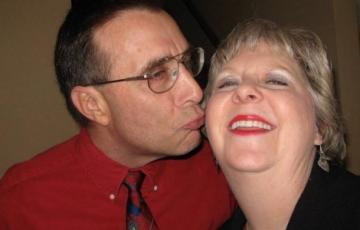
Sherry
Last March, my husband Bruce went in for what was supposed to be a "simple" surgery. When the doctor opened him up, she found a mass the size of a honeydew melon (her description to me) wound around his intestines and colon. She essentially did cancer surgery on the spot and removed lymph nodes and the tumor.
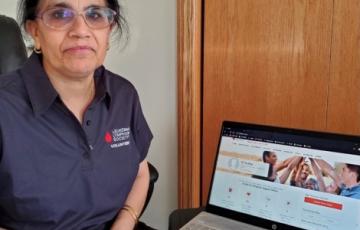
Sudha
Sudha Bhatnagar moved from India to Massachusetts in 1979. Shortly after, she met her husband and moved to Pennsylvania. At the time, the company she worked for allowed her to work from home because they were based in Massachusetts.
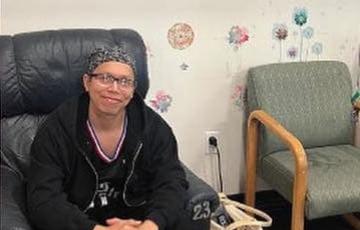
Russell
In the tapestry of life, there are moments that test the strength of the human spirit, moments that challenge our resolve and redefine our sense of purpose. For Russell, a Filipino-American music artist and entrepreneur, such a moment arrived six months after marrying the love of his life ― a moment that would alter the course of his life forever.
Madison
On April 23, 2020, at the age of 15, my whole world changed. I got the call that I was diagnosed with stage 2 Hodgkin lymphoma (HL) while getting ready for a birthday party. Throughout quarantine, I had to undergo four cycles of chemotherapy and 14 days of radiation consisting of countless days in and out of the hospital. I had allergic reactions to a few of my chemotherapies which caused me to stop breathing, and they happened at least once every cycle which was scary. My hair eventually started falling out in clumps, and the day I had to cut it off was probably when I cried the most.

Raeleigh
We were first sent to Children’s Mercy on January 5 with suspicion of an abscess in her neck. After multiple diagnostic tests, referrals to various medical specialists, and labs drawn, they came to a rheumatologic diagnosis of systemic juvenile idiopathic arthritis (SJIA). After three treatments her, symptoms and bloodwork were not improving, thus the medical specialist decided to recommend a bone marrow biopsy.
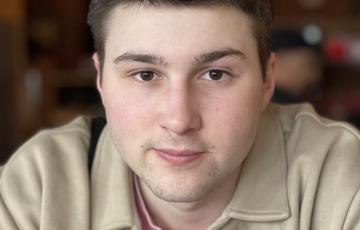
Jack
On October 19, 2018, after complaining about excruciating pain in his back, we took our 16-year-old son Jack to see the pediatrician. The doctor checked him out and told us to immediately get him to the Children's Hospital of Colorado and go to the 7th floor to see Dr. Maloney. Not paying attention and thinking nothing was wrong, we didn't notice that the 7th floor was the Center for Cancer and Blood Disorders. We met with doctors, had a blood test done, and they came back with the dreaded words, "Your child has cancer." Specifically, he had acute lymphoblastic leukemia (ALL).
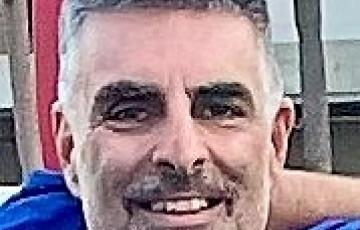
Al
I am a four-time cancer "survivor" (not totally comfortable with the term), just grateful to be alive. I was first diagnosed with testicular cancer in 1997. I had surgery to remove a testicle and radiation as a follow-up.
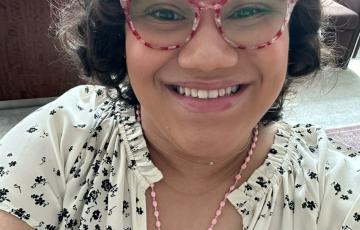
Daphne
I was diagnosed with stage 4 Hodgkin lymphoma (HL) in July 2022 after two years of being sick. I underwent 12 rounds of A+AVD chemotherapy for six months. It was a difficult journey, but I had an amazing oncology team who let me be actively involved in my treatment. I was born disabled and have had a lot of experiences in hospitals. So, I thought I would be prepared for this journey. I was wrong. I was only 24 years old when I got diagnosed and felt like I had my whole life ahead of me. As an advocate for environmental issues, I was used to traveling and working non-stop.
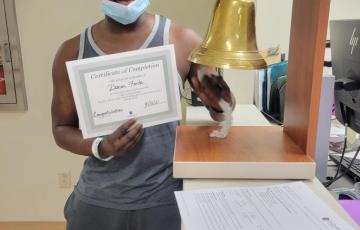
Daron
My cancer journey started back in 2021 during COVID. I worked in EMS as a paramedic. I started noticing that I was losing weight, coughing up blood, hurting continuously, losing my vision, and sleeping 16 hours a day or more while working in the medical field. I knew I was in grave danger. After several months of enduring the symptoms, I went to my primary doctor and was turned away due to them thinking it was TB. I reached out to my employer and was able to be seen by the health department. They ordered an X-ray that showed a very large mass in my chest.
Treatment
It's important that your doctor is experienced in treating patients with myeloma or works in consultation with a myeloma specialist. This type of specialist is usually called a hematologist oncologist.
Types of Treatment for MyelomaYour treatment may include one or more of the following therapies:
The International Prognostic Scoring System
Specific factors may affect the prognosis (likely outcome) of MDS, and help doctors determine when to start treatment and how intensive the treatment should be. These factors include:
Essential Thrombocythemia
Essential Thrombocythemia (ET)- Is a rare blood disease in which the bone marrow produces too many platelets. High numbers of platelets may lead to a thrombus, a blood clot that forms in a blood vessel.
Your Treatment Team
Oncologists and hematologists are specialists who treat persons with leukemia, lymphoma, myeloma, myelodysplastic syndromes and myeloproliferative diseases. Pediatric hematologist oncologists treat children, adolescents and some young adults who have blood cancers. The oncologist or hematologist-oncologist coordinates a treatment and follow-up plan that involves other doctors as well as nurses, social workers, case managers and nutritionists.
Talking with Family, Friends and Children
Many people find it best to be honest with family and friends. By confiding in loved ones, you give them the chance to offer their support. It's true that some of your relatives or friends may not know what to say or do. But most do want to be supportive.
Consider "appointing" a willing family member or friend to be your "press secretary." He or she can be responsible for regularly letting others know your health status so you can focus on your treatment and recovery.
Possible Treatment Effects
Possible effects on spermSperm is made and stored in the testes. Sperm production begins at the onset of puberty and continues throughout the person’s life, although the amount and quality of sperm can naturally decrease with age. Cancer treatment can cause:
Fertility
People in the YA age group can be in many different stages of life. You may have children; you may want children in the future; you may not want children now, but may change your mind; or you may not have given it much thought at all. Cancer treatment can affect fertility in both women and men making it difficult to conceive a child in the future. A cancer diagnosis may require you to think seriously about children.
Not all cancer treatments affect fertility. Your risk depends on several factors, including
Childhood Blood Cancer
Hearing that your child has cancer is terrifying. Today, however, most childhood blood cancer patients can expect to have full and productive lives. Thanks to new and improved therapies, survival rates for childhood blood cancer have improved significantly over the past several decades. In addition, doctors, nurses and researchers continue to search for the causes of childhood leukemia and lymphoma to develop even better treatments and tailor therapies to decrease toxic side effects.
#TILTCANCER - Start Your Charity Stream Today
#TiltCancer is The Leukemia & Lymphoma Society’s gaming & esports program. Join us and our community of content creators by creating a Livestream fundraiser, sign up for our video game fundraising events or become a #TiltCancer ambassador.

Lauren
It was last July, and I was just a regular Jersey girl. I was a 41-year-old wife, mother of two, physical therapist assistant just living a regular, normal life, or so I thought. I was just returning from a vacation in Puerto Rico, celebrating my brother's 50th birthday, when I fainted on the plane and had to have an emergency visit upon landing.

Lindsey
On Monday, February 8, I found out that I was pregnant. It was very early, but there it was two lines. On Wednesday, February 10, I told my parents and mother-in-law, and we were all so excited, so excited that on Saturday, just for fun, we went to BuyBuy Baby. On Sunday, February 14, I went to a nice Valentine’s dinner with Ethan, and when we got home, I noticed a tiny drop of blood on my underwear. By Tuesday, I called the doctor because I was still spotting, but everything else was fine, and it wasn’t a lot.
Daniel
My son was diagnosed with acute lymphocytic leukemia (ALL) in 1992 at 7 years old. Needless to say, it was a devastating blow to our family, and we were so scared! I had just gone through cancer illnesses with two other members of my family and knew how this diagnosis went. But my son, I never thought in a million years!